Front

Built in 1892, this traditional shotgun house in the Italianate style is the second project documented on This Old House television during the 2007-2008 season. The house, situated near the banks of the Mississippi River in the Lower Ninth Ward of New Orleans, was hit by a 6-foot flood after Hurricane Katrina.
The Homewner
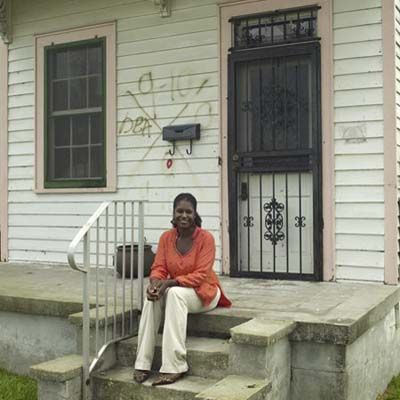
In August 2005, owner Rashida Ferdinand, a third-generation resident of the Lower Ninth who bought her house the previous year, was in the middle of renovating when the storm forced her to evacuate. This photo was taken on September 10, 2007, exactly two years after a search-and-rescue team left their telltale markings on the front porch. Though she moved back to New Orleans six months after Katrina, she has not been able to live in the house and is only now restarting work.
Living Room
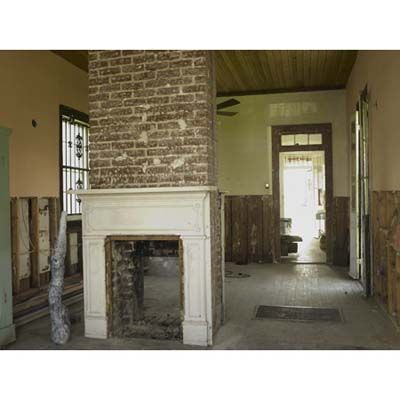
Shotgun houses are so named because the layout would allow one to fire a shotgun from the front door clear out the back door. However, Rashida had already taken down the walls between the two front rooms to create this dramatic living space with a central fireplace. The drywall has been removed up to the point where the floodwaters rose inside the house.
Kitchen
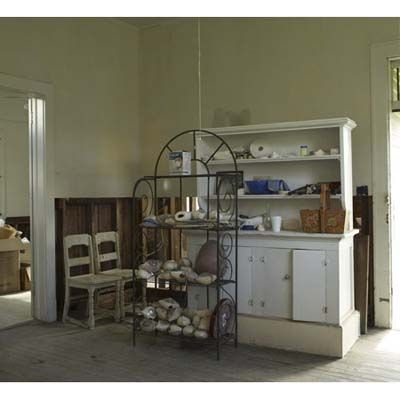
The basic kitchen is large but lacking in storage and amenities. The plans call for keeping the kitchen open but making it more functional for cooking and entertaining.
Kitchen Sink
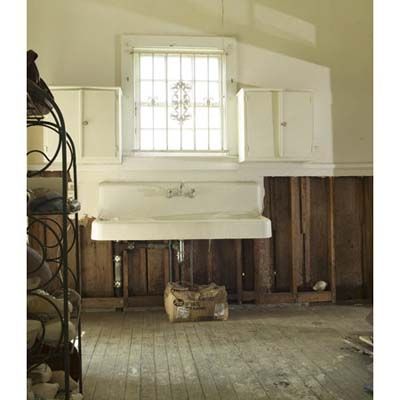
The most prominent feature left in the kitchen is a large sink, likely from the 1920s.
Bedroom
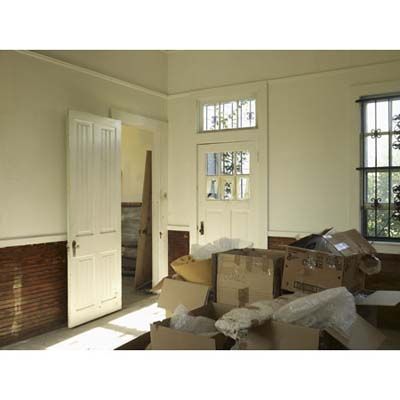
The single bedroom in the house was actually added onto the back of the structure later, creating an L-shaped footprint.
Bathroom

Rashida had completed a bathroom remodel before the storm, complete with high ceilings, a glass chandelier, and a claw-foot tub.
Bathtub
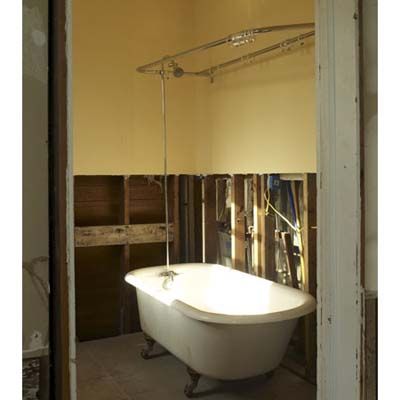
The claw-foot.
Back
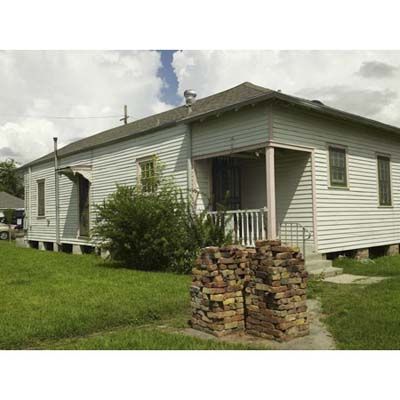
The view of the rear of the house shows a small porch off the back door. In the current renovation, the house will get a “camelback” addition—a second-floor bump-up on the back half of the building—as well as a large porch along the side from which Rashida will be able to see the river.
Outbuilding
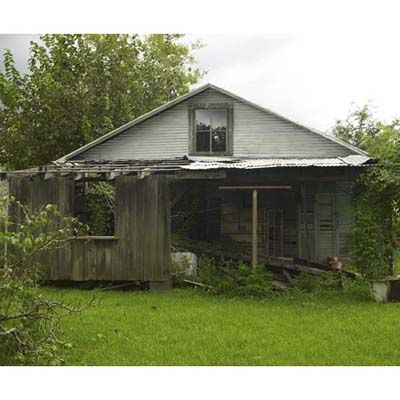
When she first saw the house, Rashida, 32, a ceramicist and art teacher (as well as a pre-med student) fell in love with this shed, which she quickly turned into her pottery studio.
Studio

Unfortunately, since the storm, the studio has become the repository for the cleanup effort—housing, among other debris, a crepe myrtle that came down during the hurricane.
An Artist’s Work
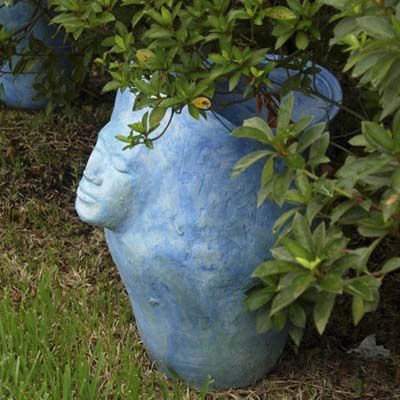
One of Rashida’s garden sculptures, at home in the shrubs. Her work has been exhibited in New Orleans, Atlanta, New York, and Japan, among other places.
The River

The banks of the Mississippi are directly across the road from Rashida’s house; every once in a while a ship passes by, appearing to float along the top of the land.
Steamboat House
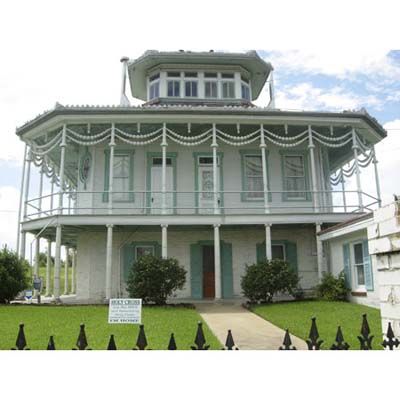
There are two grand houses in the Holy Cross neighborhood of the Lower Ninth that sit on the banks of the Mississippi and are known as the Steamboat houses or Captains’ houses. They are said to have afforded captains’ wives a perfect vantage point to await the return of their steamboat-piloting husbands. Both houses survived the storm.
A Neighborhood Comes Back
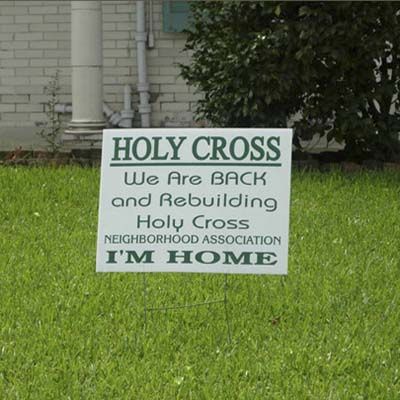
There were nearly 6,000 residents of Holy Cross before the storm. Only about 1,000 have moved back for good. But the historic neighborhood, which includes Rashida’s house, is working hard to return in body and in spirit.
Ghost Town
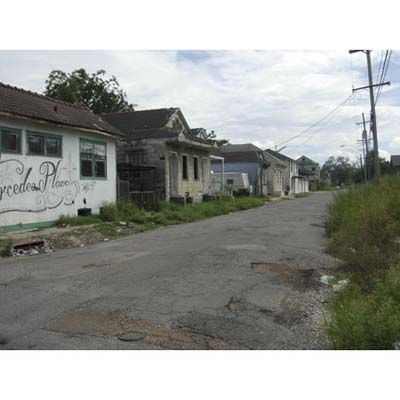
A view of the street leading up to Rashida’s house, taken in September, 2007, shows how far things still need to come before they are back to normal.
Gone, but Not Forgotten
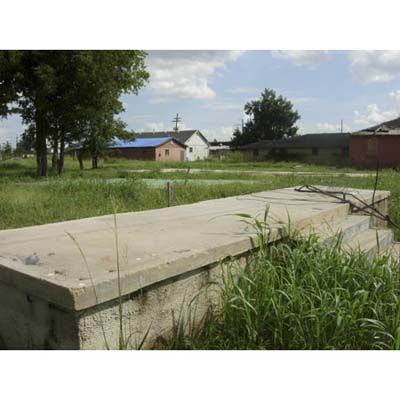
Some houses in the Lower Ninth—including the ones on the streets next to the Industrial Canal levee, which broke after Katrina—could not be saved.
The Good and the Bad
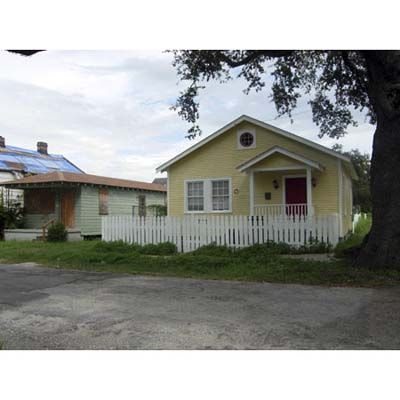
One by one, houses are being renovated.
Signs Everywhere
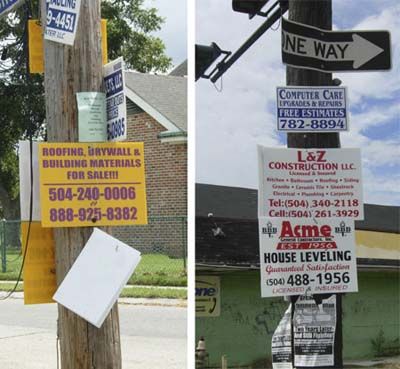
Nearly every telephone pole and street sign in the Lower Ninth is papered in contractor come-ons, offering building services, materials, or just the easiest teardown solution.
Musicians’ Village
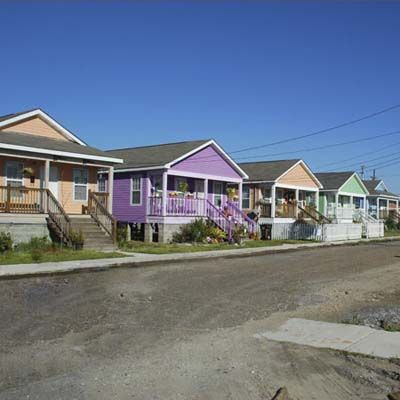
One beacon of hope in the area is Habitat for Humanity’s Musicians’ Village. The neighborhood-building effort was conceived by Harry Connick Jr. and Branford Marsalis as a way to encourage and support the return of the unique musical talent the city has always nurtured.
A Neighborhood in Formation
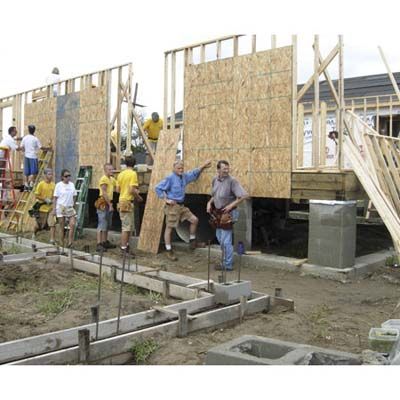
This Old House television will not only dedicate much of its New Orleans coverage to the progress in Musicians’ Village, the show’s pros will also pitch in on the building. Here, TOH master carpenter Norm Abram takes a break from working to talk with Jim Pate, the executive director of New Orleans Area Habitat for Humanity.
